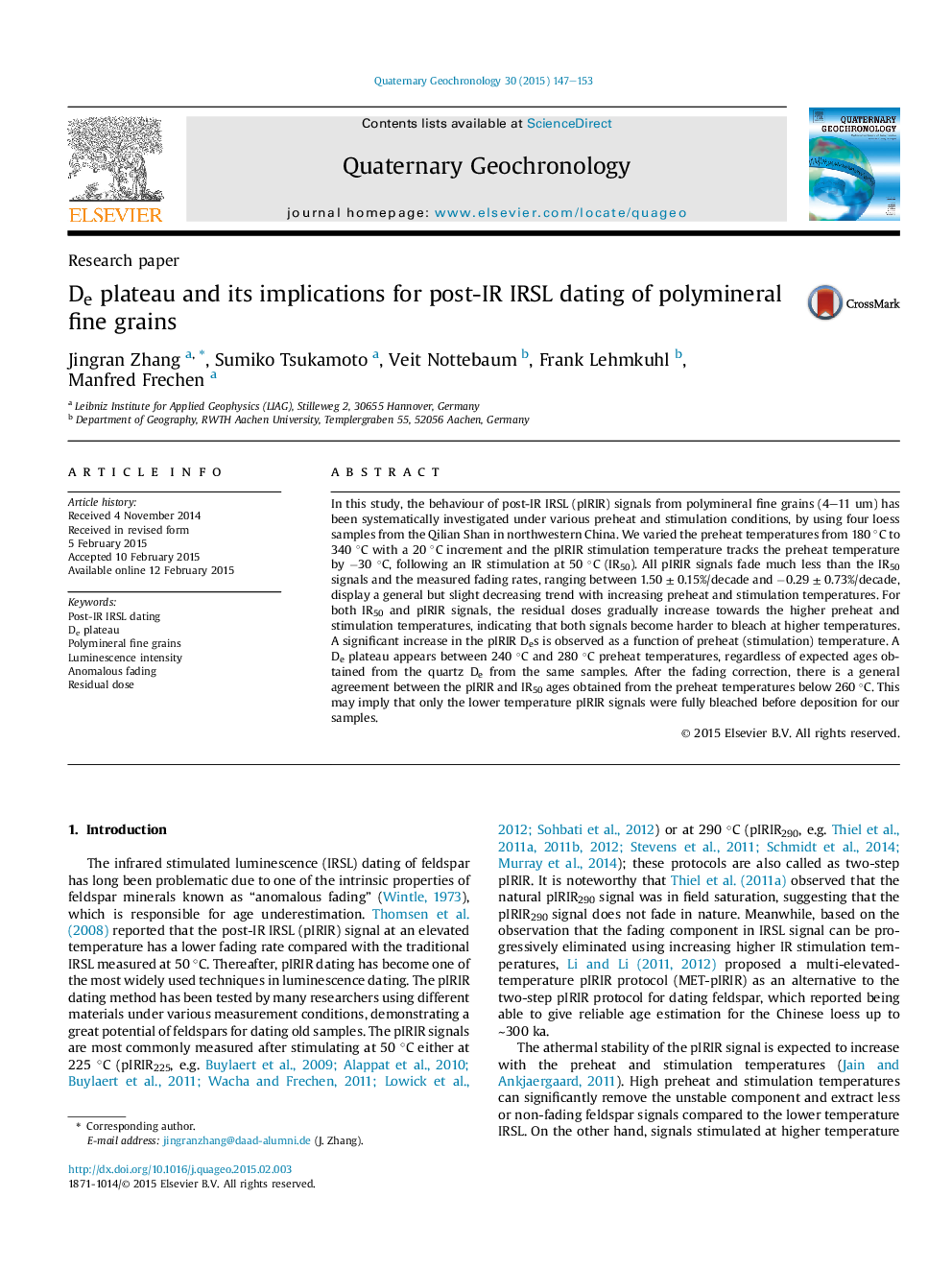| Article ID | Journal | Published Year | Pages | File Type |
|---|---|---|---|---|
| 6442530 | Quaternary Geochronology | 2015 | 7 Pages |
In this study, the behaviour of post-IR IRSL (pIRIR) signals from polymineral fine grains (4-11 um) has been systematically investigated under various preheat and stimulation conditions, by using four loess samples from the Qilian Shan in northwestern China. We varied the preheat temperatures from 180 °C to 340 °C with a 20 °C increment and the pIRIR stimulation temperature tracks the preheat temperature by â30 °C, following an IR stimulation at 50 °C (IR50). All pIRIR signals fade much less than the IR50 signals and the measured fading rates, ranging between 1.50 ± 0.15%/decade and â0.29 ± 0.73%/decade, display a general but slight decreasing trend with increasing preheat and stimulation temperatures. For both IR50 and pIRIR signals, the residual doses gradually increase towards the higher preheat and stimulation temperatures, indicating that both signals become harder to bleach at higher temperatures. A significant increase in the pIRIR Des is observed as a function of preheat (stimulation) temperature. A De plateau appears between 240 °C and 280 °C preheat temperatures, regardless of expected ages obtained from the quartz De from the same samples. After the fading correction, there is a general agreement between the pIRIR and IR50 ages obtained from the preheat temperatures below 260 °C. This may imply that only the lower temperature pIRIR signals were fully bleached before deposition for our samples.
